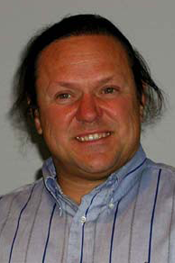
John Veranth
Email: John.Veranth@m.cc.utah.edu
Education:
-
B.S., 1971 Massachusetts Institute of Technology, Cambridge, MA, Mechanical Engineering
-
M.S., 1974 Massachusetts Institute of Technology, Cambridge, MA, Mechanical Engineering
-
Ph.D., 1998 University of Utah, Chemical and Fuels Engineering
Research Interests
My interests center on building collaborative research programs that address the health effects of fine particles from combustion and other anthropogenic sources. This is an exciting area on the interface between combustion science, aerosol science, chemical engineering transport phenomena analysis, and the life sciences. The effect of ambient particles on sensitive populations is a complex issue of immediate social and economic concern where progress requires integrating the efforts of specialists in engineering, meterology, biochemistry, and medicine. My current projects involve experimental and computational simulation studies of combustion aerosols, field studies of wind-blown dust in arid climates, and cell culture and whole animal studies of responses to transition metals in inorganic particles.
- Veranth, J. M., H. Ghandehari and D. W. Grainger (2009). Chapter 24. Nanoparticles in the Lung. in Volume 9 - Toxicology of the Respiratory System, Comprehensive Toxicology Series Ed. G. S. Yost. Elsevier.
- Veranth, J. M., N. S. Cutler, E. G. Kaser, C. A. Reilly and G. S. Yost (2008). “Effects of cell type and culture media on interleukin-6 secretion in response to environmental particles.” Toxicology in Vitro 22(2): 498-509.
- Sabnis, A. S., C. A. Reilly, J. M. Veranth and G. S. Yost (2008). “Increased transcription of cytokine genes in human lung epithelial cells through activation of a TRPM8 variant by cold temperatures.” American Journal of Physiology, Lung Cellular and Molecular Physiology Accepted for publication
- Veranth, J. M., G. D. Silcox and D. Pershing (1997). "Numerical Modeling of the Temperature Distribution in a Commercial Hazardous Waste Slagging Rotary Kiln." Environmental Science and Technology 31: 534-2539.
- Parker, J. L., R. R. Larson, E. Eskelson, E. M. Wood and J. M. Veranth (2008). “Particle size distribution and composition in a mechanically ventilated school building during air pollution episodes.” Indoor Air 18(5): 386.
- Deering, C. E., S. Tadjiki, S. Assemi, J. D. Miller, G. S. Yost and J. M. Veranth (2008). “A novel method to detect unlabeled inorganic nanoparticles and submicron particles in tissue by sedimentation field-flow fractionation.” Particle & Fibre Toxicology 5(18):
- Veranth, J. M., E. G. Kaser, M. M. Veranth, M. Koch and G. S. Yost (2007). “Cytokine responses of human lung cells (BEAS-2B) treated with oxide micron-sized and nanoparticles compared to soil dusts.” Particle and Fibre Toxicology 4(2)
- Pardyjak, E. R., S. O. Speckart, F. Yin and J. M. Veranth (2007). “Near-source deposition of vehicle generated fugitive dust on vegetation and buildings. Part 1: Model development and theory.” Atmospheric Environment 42(26): 6442-6452.
- Veranth, J. M., T. A. Moss, J. C. Chow, R. Labban, W. K. Nichols, J. C. Walton, J. G. Watson and G. S. Yost (2006). “Correlation of in vitro cytokine responses with the chemical composition of soil-derived particulate matter.” Environmental Health Perspectives 114(3): 342-349.
- Smith, K. R., J. M. Veranth , U. P. Kodavanti, A. E. Aust and K. E. Pinkerton (2006). “Acute pulmonary and systemic effects of inhaled coal fly ash in rats: comparison to ambient particles.” Toxicological Sciences 93(2): 390-399.
- Teague, S. V., J. M. Veranth A. E. Aust and K. E. Pinkerton (2005). “Dust generator for inhalation studies with limited amounts of archived particulate matter.” Aerosol Science and Technology 39(2): 85-91.
- Veranth, J. M., C. A. Reilly, M. M. Veranth, T. A. Moss, C. R. Langelier, D. L. Lanza and G. S. Yost (2004). “Inflammatory cytokines and cell death in BEAS-2B lung cells treated with soil dust, lipopolysaccharide, and surface-modified particles.” Toxicological Sciences 82: 88-96.